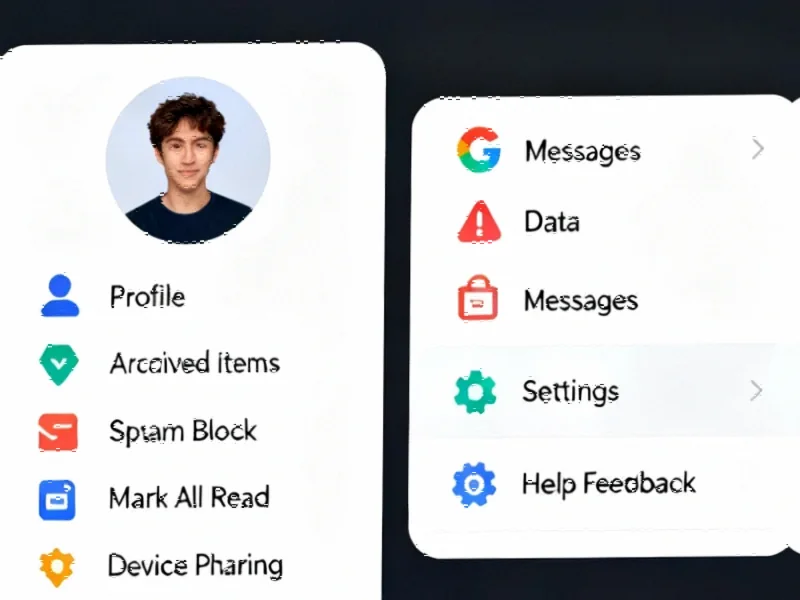WhatsApp’s Proactive Stand Against Unwanted Messages
In an era where digital communication dominates our daily interactions, WhatsApp is taking a groundbreaking approach to combat one of the most persistent challenges facing messaging platforms today. The Meta-owned service, which boasts over two billion users worldwide, is implementing monthly message limits for communications sent to unknown recipients who don’t respond—a strategic move that could fundamentally change how businesses and individuals approach unsolicited messaging.
This initiative represents a significant evolution in spam prevention technology, moving beyond reactive measures to a more nuanced system that identifies potential spam based on engagement patterns rather than just content analysis. Unlike traditional spam filters that scan message content, this system monitors communication behavior, creating a more sophisticated defense mechanism against unwanted messages.
Understanding the New Message Limit Framework
The core of WhatsApp’s new strategy lies in establishing a “per-month limit” on messages sent to users who haven’t saved the sender as a contact and don’t respond. This carefully designed system includes several key provisions that distinguish it from blunt communication restrictions:
- Response Reset Mechanism: When a recipient replies to a message, the previously sent messages no longer count toward the monthly limit
- Contact Exemption: Messages sent to users who have saved the sender as a contact are not subject to these limits
- Progressive Warnings: Users approaching their limit will receive in-app notifications, preventing sudden communication disruptions
According to WhatsApp’s official communication about the message limits, the platform emphasizes that typical users will rarely encounter these restrictions. The limits specifically target accounts that engage in “blast messaging” behavior—sending identical or similar content to numerous users without establishing genuine engagement.
The Technical Implementation and Global Rollout
WhatsApp has confirmed that specific limit thresholds remain undetermined as the company prepares for a multi-country testing phase in the coming weeks. The messaging giant indicated it will experiment with different limit levels across various markets to determine optimal thresholds that minimize spam without hindering legitimate communication.
This careful, data-driven approach reflects WhatsApp’s understanding of regional communication patterns and spam prevalence differences across global markets. The phased implementation allows for adjustments based on real-world usage data, ensuring the final limits strike the right balance between spam prevention and communication freedom.
The timing of this initiative aligns with broader Meta’s platform security enhancements across its family of applications. These coordinated efforts demonstrate how technology giants are addressing ecosystem-wide challenges through integrated solutions.
Contextualizing Within Broader Anti-Spam Efforts
WhatsApp’s message limit system represents the latest in a series of anti-spam measures the platform has introduced. Recent features include the ability to unsubscribe from marketing messages with a single tap and options to block potential spam directly from lock screen notifications—tools that give users more immediate control over their messaging experience.
These developments reflect a growing recognition within the technology sector that combating spam requires multi-layered approaches. As artificial intelligence continues to transform digital communication, the methods used by spammers become increasingly sophisticated, necessitating equally advanced countermeasures.
The messaging limit strategy also arrives amid significant broader technological workforce developments that highlight how digital platforms are adapting to evolving user needs and expectations. As users become more concerned about digital wellbeing and communication overload, platforms must innovate to maintain user trust and satisfaction.
Implications for Businesses and Individual Users
For legitimate businesses using WhatsApp for customer communication, these changes necessitate a strategic shift toward more targeted, engagement-focused messaging. The new limits reward quality over quantity, encouraging businesses to focus on building genuine customer relationships rather than broadcasting generic messages.
Individual users stand to benefit from reduced inbox clutter without sacrificing important communications. The system’s intelligence—particularly the response reset feature—ensures that meaningful conversations can continue uninterrupted, while one-sided messaging campaigns face natural constraints.
This approach to spam prevention represents an interesting parallel to engagement-driven systems in other digital sectors, where user interaction increasingly determines content visibility and distribution. The underlying principle across these domains is that genuine engagement, rather than mere broadcasting, should guide digital communication.
The Future of Messaging Platform Governance
WhatsApp’s message limit initiative signals a broader trend in how digital platforms are rethinking content governance. Rather than relying solely on post-facto removal of violating content, platforms are increasingly implementing structural constraints that prevent abusive behavior patterns from developing in the first place.
This proactive approach to platform management reflects growing understanding that effective digital governance requires designing systems that naturally discourage misuse, rather than simply punishing it after the fact. As messaging continues to evolve as a primary communication channel, such thoughtful system design becomes increasingly crucial for maintaining healthy digital ecosystems.
The success of WhatsApp’s message limit experiment could influence how other platforms approach similar challenges, potentially setting new standards for responsible communication platform design across the technology industry. As these systems develop, they’ll likely incorporate increasingly sophisticated algorithms that can distinguish between different types of communication patterns with greater precision.
This article aggregates information from publicly available sources. All trademarks and copyrights belong to their respective owners.
Note: Featured image is for illustrative purposes only and does not represent any specific product, service, or entity mentioned in this article.



